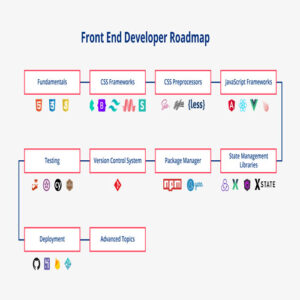In the dynamic landscape of modern workplaces, where technology plays a pivotal role in daily operations, having a reliable IT Help Desk is crucial for maintaining productivity and addressing technical challenges. One significant aspect that users often inquire about is the response time for IT support. This article delves into the factors influencing response times, the importance of prompt assistance, and strategies for organizations to manage and optimize their support services.
Factors Influencing Response Times
Issue Severity
The severity of an IT issue decides how quickly it gets a response. Initially, Help Desks sort issues into different levels based on their impact. Particularly, critical issues, like system outages or security breaches, need immediate attention, leading to faster response times.
Service Level Agreements (SLAs)
Many organizations set up Service Level Agreements to outline expected response times for different issues. Consequently, these agreements make expectations clear for users and the IT Help Desk, ensuring transparency and accountability.
Workload and Ticket Volume
The overall workload and ticket volume affect response times a lot. Notably, during busy times or when there are many support requests, the IT Help Desk might experience delays. Therefore, having efficient ticket management systems and staff allocation is crucial during high-demand periods.

Importance of Prompt Assistance
Minimizing Downtime
Swift response times directly contribute to minimizing downtime. Whether it’s a malfunctioning system, network connectivity issues, or software glitches, a prompt resolution ensures that employees can resume their work quickly, preventing disruptions to business operations. Furthermore, swift responses also contribute to maintaining a seamless workflow, mitigating potential setbacks. Additionally, proactive resolution of issues helps in preventing further complications that could arise from prolonged downtime.
User Satisfaction
Users appreciate timely assistance. A fast response not only resolves technical issues promptly but also enhances user satisfaction. A positive experience with IT support fosters trust and confidence in the IT infrastructure. Additionally, a prompt resolution creates a positive perception of the overall support system, fostering a sense of reliability among users. Moreover, consistently meeting user expectations through prompt responses contributes to building a strong foundation for long-term user loyalty.
Impact on Productivity
Delays in resolving IT issues can have a cascading effect on productivity. Employees waiting for technical assistance may be unable to perform their tasks efficiently, affecting the overall productivity of the organization. Consequently, such delays can lead to a domino effect, impacting various facets of organizational productivity, including project timelines and team collaboration. Moreover, prioritizing timely issue resolution is key to maintaining a smooth workflow and ensuring that productivity remains consistently high. Additionally, addressing IT issues promptly helps prevent the accumulation of work-related bottlenecks.
Strategies for Managing and Optimizing Response Times
Automated Ticketing Systems
Implementing automated ticketing systems streamlines the process of logging and categorizing support requests. Automation helps in prioritizing tickets based on severity and ensures that they reach the appropriate support personnel promptly. Additionally, automated ticketing systems provide a structured framework for efficient issue resolution. Furthermore, these systems enhance overall workflow by reducing manual efforts and minimizing errors.
Skillful Staff Allocation
Efficient staff allocation is crucial for managing response times. Ensure support teams can handle various issues, providing quicker and more accurate solutions. Strategic staff allocation promotes a specialized approach, enhancing problem-solving efficiency. Moreover, this approach ensures that each support team member is working on tasks aligned with their expertise, further optimizing the resolution process.
Continuous Monitoring and Analysis
Regularly monitor the IT Help Desk’s performance to identify areas for improvement. Metrics like ticket resolution times, customer satisfaction scores, and workload analysis offer valuable insights. Continuous monitoring helps organizations adapt and refine support processes, optimizing response times. Additionally, real-time analysis allows for prompt adjustments to meet evolving needs and challenges.
User Education and Self-Service Resources
Educating users about common IT issues and providing self-service resources can empower them to troubleshoot simple problems independently. This not only reduces the volume of support requests but also allows the IT Help Desk to focus on more complex issues. Moreover, user education fosters a proactive approach, contributing to a more knowledgeable and self-sufficient user base. Furthermore, investing in user education can lead to long-term efficiency gains and improved user satisfaction.
Conclusion
In IT support, how quickly the Help Desk responds is crucial for the organization and user satisfaction. Organizations can improve response times by knowing what factors affect them and using effective strategies. This ensures that IT support is not only fast but also good at solving technical issues. Making the Help Desk quick and helpful is like investing in the smooth operation of the whole organization’s IT system. In the end, having a proactive and efficient support system helps keep everything running smoothly at a high level.










